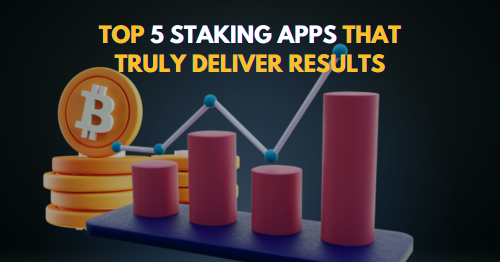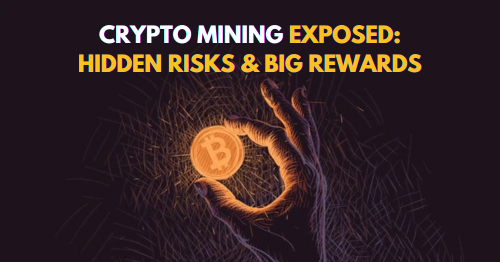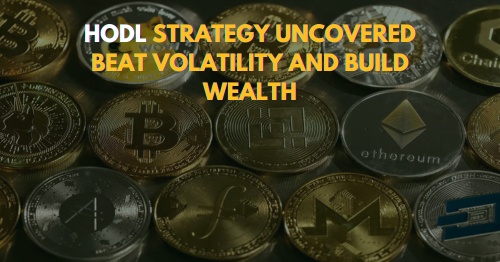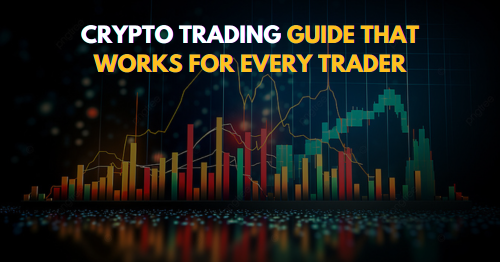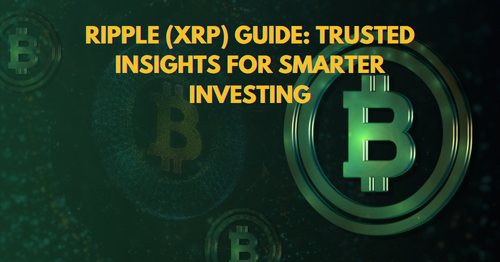
Ripple (XRP) Guide Trusted Insights for Smarter Investing
Ripple (XRP) has become a cornerstone in the evolving world of cryptocurrencies, offering a unique approach to digital payments that appeals to both financial institutions and investors. This comprehensive guide from our Learn Crypto series will help both beginners and experts understand Ripple (XRP)’s purpose, technology, legal landscape, and long-term potential.
What is Ripple (XRP)?
Ripple (XRP) is both a cryptocurrency and a blockchain-based payment protocol. Unlike most cryptocurrencies that serve as peer-to-peer payment alternatives, Ripple (XRP) focuses on providing infrastructure for cross-border payments and interbank transfers. XRP, the native token, is used as a bridge currency to facilitate fast, frictionless transactions between different fiat currencies.
The Ripple protocol eliminates the need for intermediaries and pre-funded accounts by using XRP to provide liquidity between transaction endpoints. This makes Ripple (XRP) especially attractive to banks, financial institutions, and international remittance providers.
Read All About: Bitcoin, Binance Coin, Solana & Ethereum
Owner and Establishment Year
Ripple (XRP) was officially launched in 2012 by Ripple Labs Inc., a San Francisco-based fintech company. The co-founders of Ripple include:
- Chris Larsen, a veteran Silicon Valley entrepreneur
- Jed McCaleb, also the founder of Mt. Gox and Stellar
- Arthur Britto, a lesser-known but core contributor to XRP’s development
Currently, Ripple Labs is led by CEO Brad Garlinghouse, a former executive at Yahoo! and AOL. Under his leadership, the company has expanded its global presence, initiated partnerships with over 300 financial institutions, and positioned Ripple (XRP) as a leader in blockchain-based payment infrastructure.
History and Development
Ripple’s vision began as early as 2004, when developer Ryan Fugger conceived a peer-to-peer trust network called RipplePay. In 2012, the idea evolved into Ripple Labs, which created the XRP Ledger—an open-source blockchain optimized for fast and scalable digital asset transfers.
Key milestones in Ripple (XRP)’s journey include:
- 2013–2015: Ripple partnered with early adopters in the banking sector and gained media attention as an enterprise blockchain alternative.
- 2017–2018: XRP gained popularity during the crypto bull run, hitting an all-time high of $3.84.
- 2020: The SEC filed a lawsuit claiming Ripple (XRP) was an unregistered security.
- 2023: A partial legal victory stated XRP was not a security when sold to retail investors on exchanges.
- 2024–2025: Ripple expanded its product suite, focusing on Central Bank Digital Currencies (CBDCs), On-Demand Liquidity (ODL), and NFT support.
Despite regulatory hurdles, Ripple (XRP) has shown resilience and innovation, maintaining its position in the top 10 cryptocurrencies by market cap.
Key Features and Underlying Technology
Ripple (XRP) distinguishes itself from other digital currencies through several core features:
1. Speed
Transactions on the XRP Ledger settle in 3 to 5 seconds, significantly faster than Bitcoin (10 minutes) or Ethereum (15 seconds).
2. Low Fees
The average transaction cost is 0.00001 XRP, making it an ideal solution for both microtransactions and high-volume transfers.
3. Scalability
The XRP Ledger can handle up to 1,500 transactions per second (TPS), rivaling major payment networks like Visa.
4. Energy Efficiency
Ripple (XRP) uses a consensus protocol, not proof-of-work. This makes it more environmentally friendly compared to Bitcoin or Ethereum.
5. RippleNet
RippleNet is Ripple’s enterprise blockchain network that connects financial institutions globally. It facilitates secure, real-time payments and uses XRP as a bridge asset to provide liquidity.
6. Open-Source Ledger
The XRP Ledger is decentralized and open-source, maintained by a diverse set of validators from around the world.
These technical strengths make Ripple (XRP) suitable not just for banks, but also for governments, developers, and enterprises exploring blockchain solutions.
Use Cases and Adoption
Ripple (XRP) has gone beyond theory to find real-world application in several sectors:
- Banking: RippleNet is used by banks like Santander, SBI Holdings, and PNC Bank to facilitate international transactions.
- Remittance Services: Companies like MoneyGram (prior to its exit) and Tranglo have used Ripple (XRP) to lower remittance fees and reduce settlement time.
- On-Demand Liquidity (ODL): Ripple’s ODL platform removes the need for pre-funded accounts by using XRP to provide instant liquidity.
- CBDCs: Ripple Labs is working with several countries to explore using XRP Ledger technology for launching national digital currencies.
- NFTs and DeFi: With updates like XLS-20, XRP Ledger now supports non-fungible tokens and decentralized finance capabilities.
These use cases highlight Ripple (XRP)’s practical value in bridging traditional finance with blockchain-based innovation.
Price Trends and Market Insights
Ripple (XRP)’s market behavior is closely tied to both regulatory news and institutional partnerships.
- Early Days: XRP traded under $0.01 for years post-launch.
- 2017 Bull Market: XRP peaked at $3.84, briefly becoming the second-largest cryptocurrency by market cap.
- 2018–2020: Declined due to market correction and legal concerns.
- 2021–2023: Prices fluctuated between $0.20 to $1.40, depending on SEC litigation updates.
- 2024–2025: Ripple (XRP) remains stable around $0.50–$0.70, showing strong resistance and institutional buying interest.
Market analysts believe that once legal clarity is achieved, Ripple (XRP) could revisit the $1.50–$2.00 range, especially if RippleNet expands further across Asia, Africa, and Latin America.
How to Buy and Store Ripple (XRP)
How to Buy
Ripple (XRP) is listed on many major exchanges:
You can purchase XRP with fiat currencies like INR, USD, EUR or use crypto pairs like BTC, ETH, or USDT. Always use secure exchanges with proper KYC and 2FA protocols.
How to Store
After purchase, you should store Ripple (XRP) safely:
- Hardware Wallets: Ledger Nano X, Trezor Model T
- Software Wallets: Trust Wallet, Exodus, Atomic Wallet
- Exchange Wallets: Suitable for short-term storage or frequent trading
For large holdings, consider cold storage or multi-signature wallets. Avoid storing XRP long-term on exchange wallets due to hacking risks.
Future Outlook and Predictions
The long-term outlook for Ripple (XRP) is optimistic, driven by multiple macro and micro trends:
1. Legal Resolution
Ripple’s favorable outcome in its case with the SEC opens the door for broader institutional investment and potential U.S.-based partnerships.
2. Global CBDC Collaboration
Ripple Labs is working with several governments and central banks to provide a blockchain framework for Central Bank Digital Currencies. This could significantly raise XRP’s relevance in the monetary system.
3. Technological Evolution
With the integration of NFTs, smart contracts, and support for more developers through XRPL Grants, the Ripple (XRP) ecosystem is expanding beyond payments.
4. Institutional Trust
Banks and large corporations prefer Ripple (XRP) due to its regulatory focus, security, and speed, giving it a distinct edge over decentralized competitors.
5. Price Prediction
If Ripple achieves a full legal win and continues onboarding institutions, XRP could surpass its previous all-time high within the next market cycle. However, prices also depend on global market conditions, crypto regulations, and Bitcoin’s macro trends.
Final Thoughts
Ripple (XRP) is not just another digital coin. It’s a foundational blockchain network designed to modernize the global financial system. With real-world use cases, proven technology, and growing institutional trust, Ripple (XRP) continues to lead in crypto utility and enterprise adoption.
Whether you’re a beginner building your first crypto portfolio or an expert exploring blockchain’s future, Ripple (XRP) offers both stability and growth potential. As part of the Learn Crypto series, we recommend keeping a close eye on Ripple’s roadmap, regulatory developments, and technical updates to make informed investment decisions.
I work as a content writer in the blockchain and cryptocurrency domain. I have a keen interest in exploring the world of digital assets, Web3, and emerging crypto technologies. My goal is to provide readers with easy-to-understand, engaging, and trustworthy insights, helping them stay informed and confident in the rapidly evolving world of crypto and blockchain.


